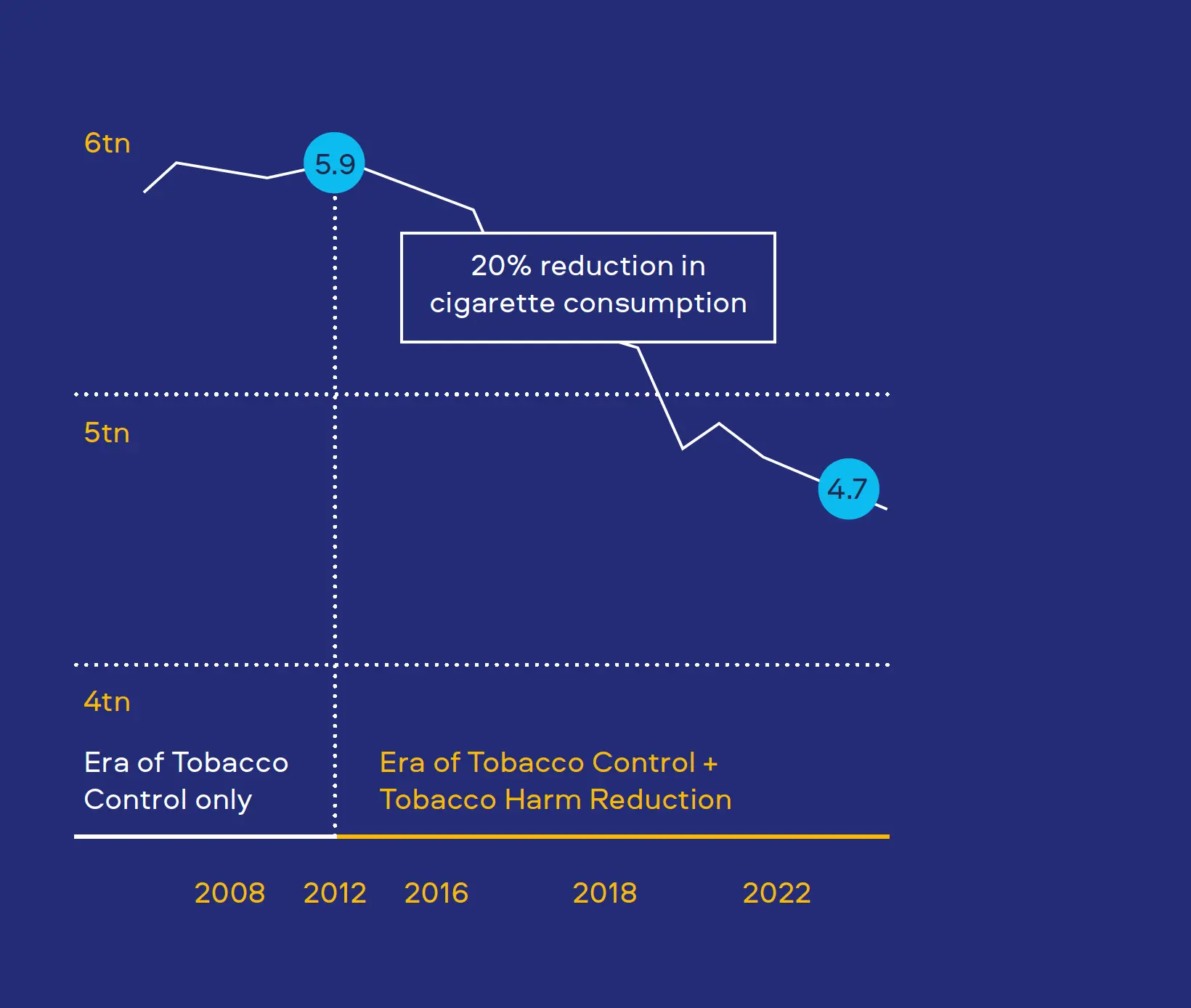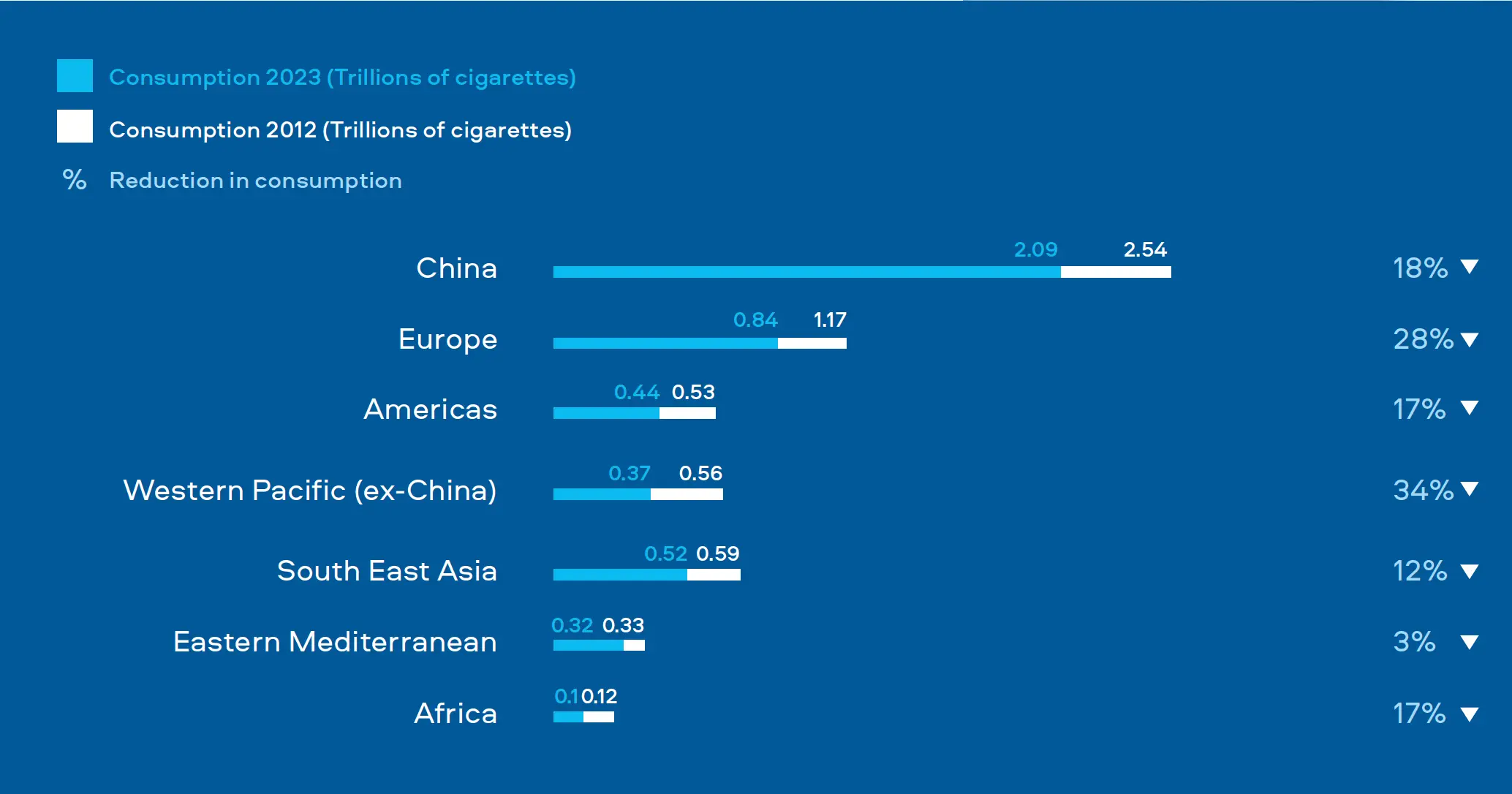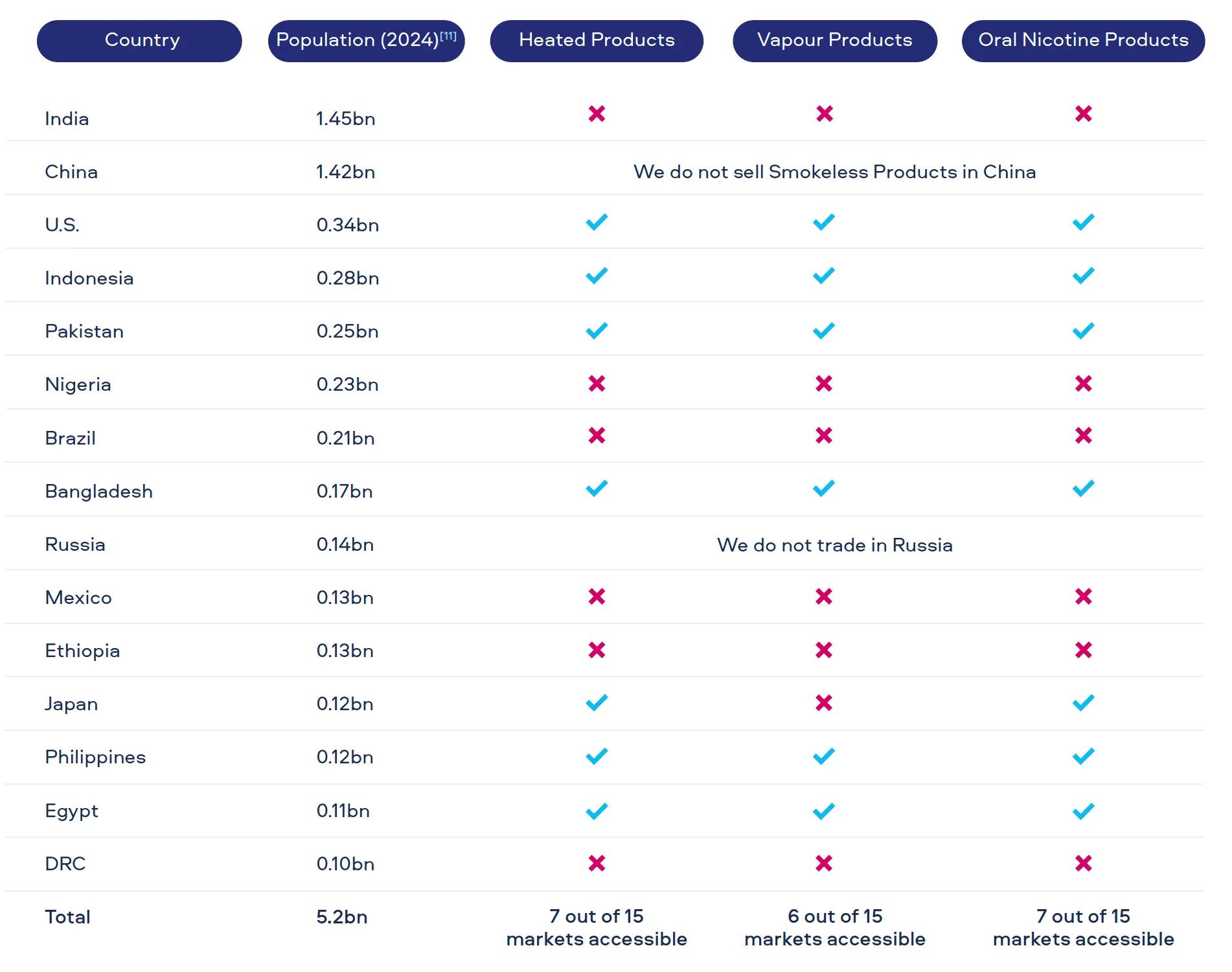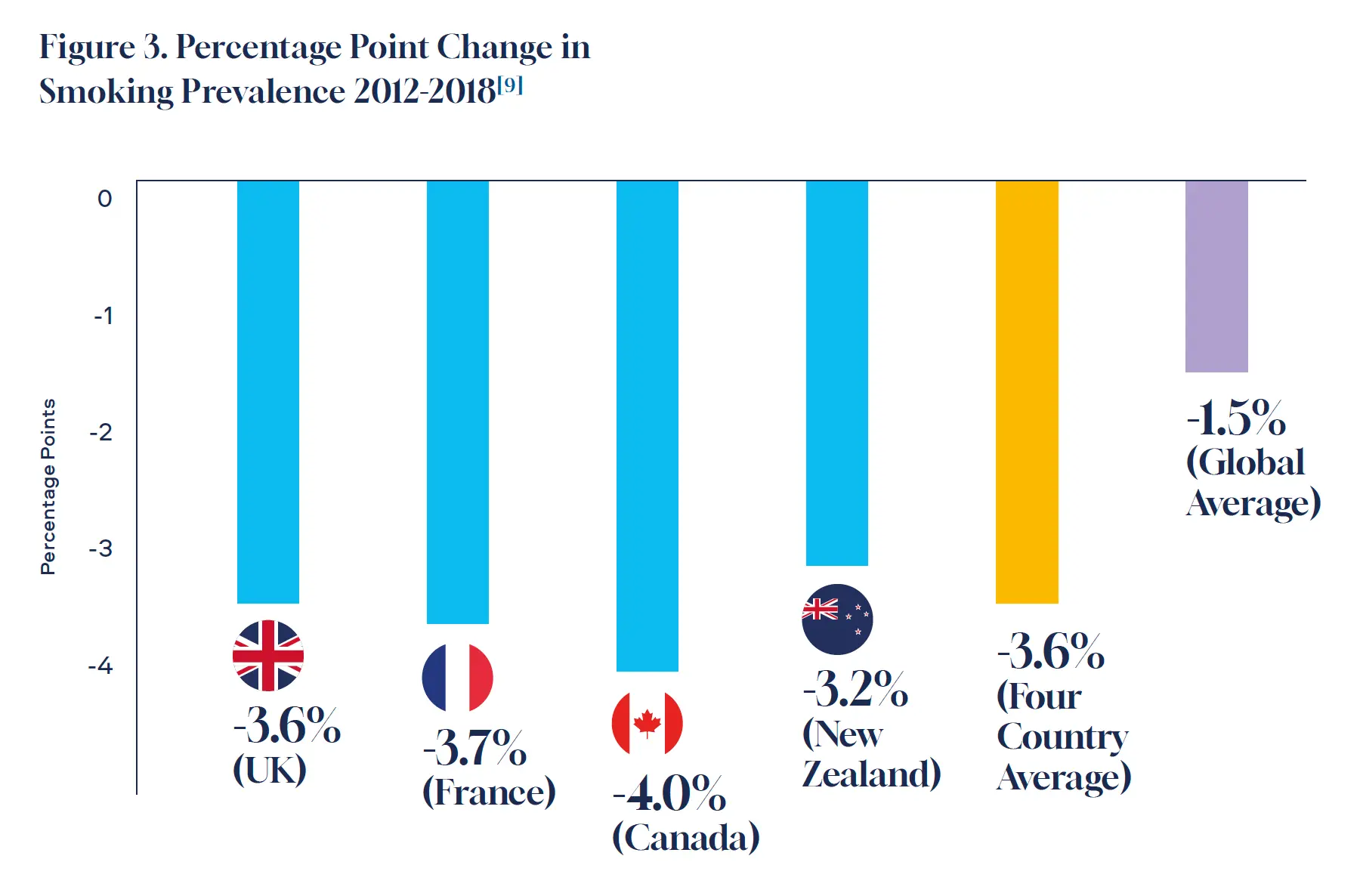Stakeholders often have diametrically opposed opinions on the issue of driving down global cigarette consumption. But a common thread exists in that all stakeholders are seeking an improvement in public health while minimising unintended consequences. In terms of the prohibitionary nature of certain strategies, there are a number of likely unintended consequences such as (i) an increase in illicit trade and (ii) unregulated alternative products on the market that do not comply with product safety and quality standards such as regulated products from accountable manufacturers.
Smokeless Product use is growing
In the past five years, Smokeless Product use has increased with the global number of adult consumers growing by approximately 70% (68 million Smokeless Product consumers in 2020 to 115 million Smokeless Product consumers in 2024).[1,2,3] With approximately one billion adult smokers globally,[5] this equates to around 11.5% of today's smoking population.
However, not all the world's adult smokers have legal access to Smokeless Products. If we consider India and Brazil, two countries that have banned the sale of Smokeless Products, their smoking prevalence is approximately 7% and 11%,^[5] respectively. This equates to approximately 120 million adult smokers^^ who did not have legal access to Smokeless Products. Therefore, the total number of global Smokeless Product consumers in comparison to global smokers is >13%^^^ (115 million out of 880 million).
However, when access to Smokeless Products is looked at in the top 15 countries in the world by population (Table 1), it’s clear that much more can be done to give adult smokers within these countries access to lower risk profile products. We believe that tobacco control measures and THR can work in concert to reduce cigarette consumption and encourage adults who would otherwise smoke to switch completely to lower risk*† alternative tobacco and nicotine products. This is aligned with the ambitions of all stakeholders in improving future public health outcomes.
We believe that tobacco control measures and THR can work in concert to reduce cigarette consumption and encourage adults who would otherwise smoke to switch completely to lower risk*† alternative tobacco and nicotine products. This is aligned with the ambitions of all stakeholders in improving future public health outcomes.
















